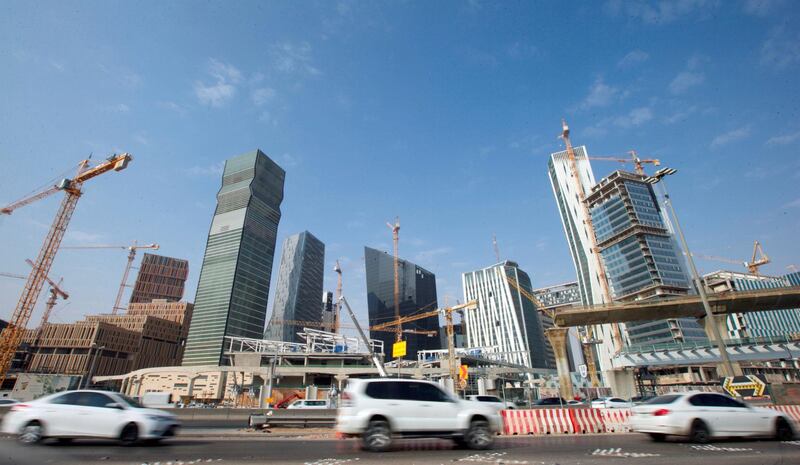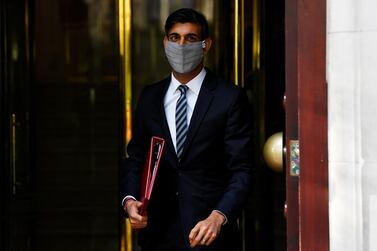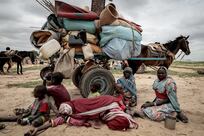Saudi Arabia’s capital Riyadh is more resilient than other cities around the world, despite its low population density and arid conditions, according to a survey by insurer Lloyd’s.
The speed and scale of the kingdom’s economic reforms, including its diversification from oil towards a mixed services economy, and a series of initiatives such as new smart city programmes and the construction of a metro network, have contributed to the city’s resilience, the study found.
“With solid investment in public transport and smart city initiatives, the city is well positioned to manage its explosive population growth,” said Andrew Woodward, the insurer’s regional manager for the Middle East and Turkey.
“Lloyd’s stands ready to help maintain this upward trajectory by working closely with local authorities, regulators, governments and the Saudi market to build resilience against risks associated with high temperatures and flash flooding.”
Lloyds' report, Cities at risk – Building a resilient future for the world's urban centres, was published in association with Urban Foresight and Newcastle University, and commissioned before the Covid-19 pandemic.
It analyses the risks cities face today and in the future, and how these threats affect urban areas.
The study is intended to help city administrators and risk managers understand the threats that will influence the design and function of cities in the coming decades, how the risks can be reduced and how local authorities can work with insurers.
The study comes as the Covid-19 crisis sharpens the world’s focus on the ability of cities to endure the damage caused by threats such as pandemics, and highlights the features that contribute to either greater resilience or vulnerability.
The crisis has also underscored the impact that systemic risks can have on urban areas, with severe economic and social consequences extending across the world.
“The commissioning of this report was prescient,” said Graham Throwers, head of infrastructure and investment at Urban Foresight.
“As cities continue to evolve, their shape and functional performance is being questioned like never before. Recent events have highlighted the importance of our great cities as concentrations of economic, political and social activity. They are also environments in which risks concentrate.”
The report looked at seven case studies involving London, New York, Miami, Mexico City, Johannesburg, Riyadh and Shanghai.
These cities were used to highlight global issues and as scenarios to understand how specific risks are managed or mitigated.
The study looked at four main trends: the impact of climate change on cities, the use of technology to develop city infrastructure, the growth of the middle class in developing economies and older populations in developed countries, as well as the development of smart cities.
Cities face four main threats, according to the survey.
First, global geopolitical tensions are fuelling uncertainty and deterring long-term investment.
“The risk of resource scarcity, social unrest, pollution, pandemics and terrorism is more acute,” it said.
Secondly, cities are dealing with climate change pressures caused by the concentration of urban populations, leading to cities and their residents becoming more vulnerable to extreme weather events.
Third, cities are becoming more interconnected and reliant on smart technology that generates a large volume of data, making them more vulnerable to catastrophic scenarios such as space events that can knock out satellite communications, cause power cuts and disrupt the flow of information that is needed to operate essential infrastructure.
Finally, cities stand to incur the highest gross domestic product losses due to financial risks such as market crashes, commodity price shocks and sovereign defaults, according to Lloyd’s City Risk Index.
“Economic development could become an onerous challenge,” the report said.
Lloyd’s found that cities, in general, are still underinsured when it comes to these types of threats.








